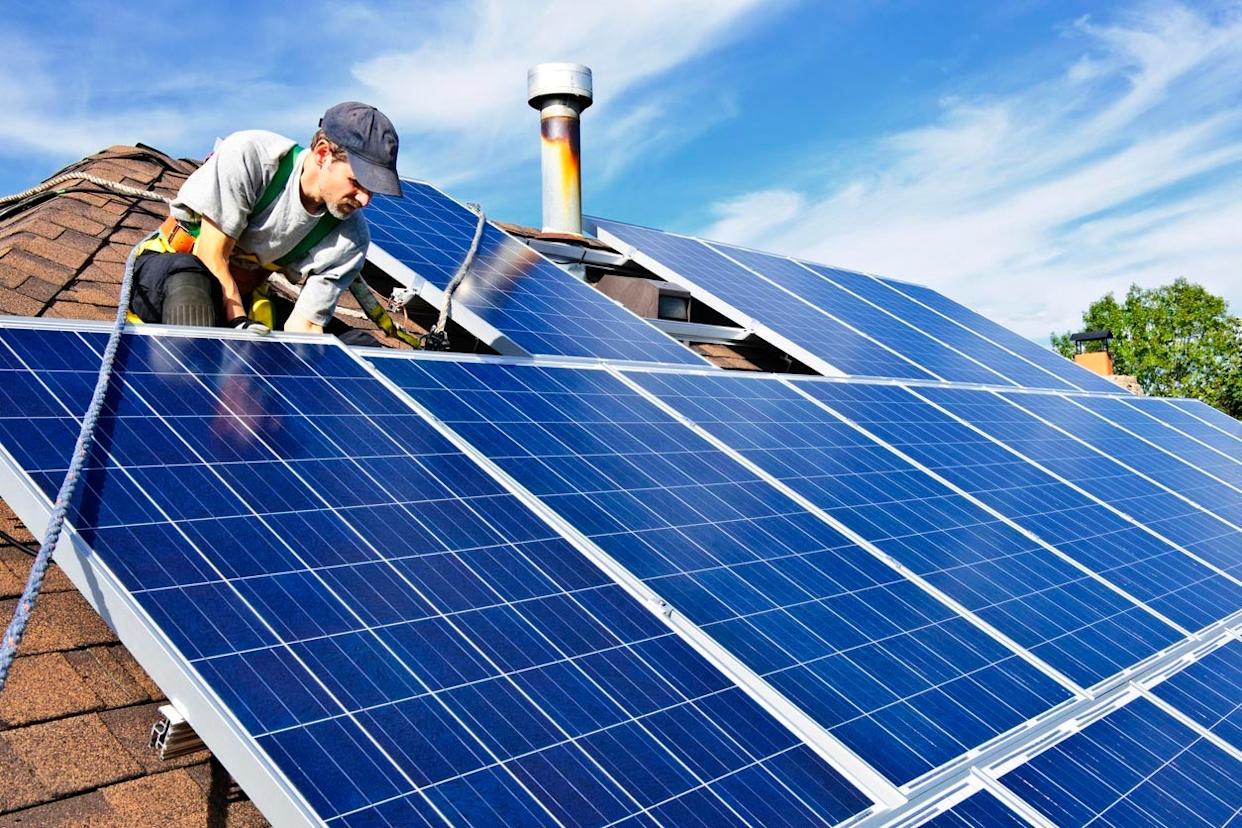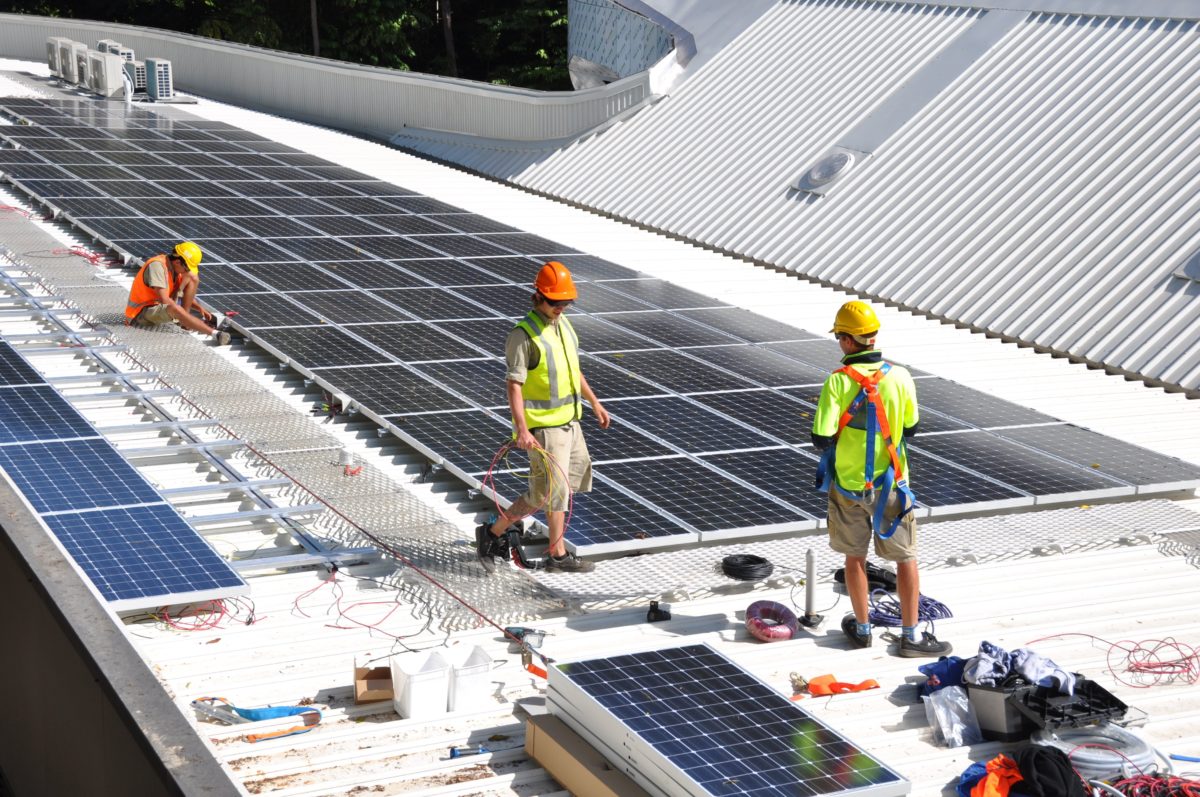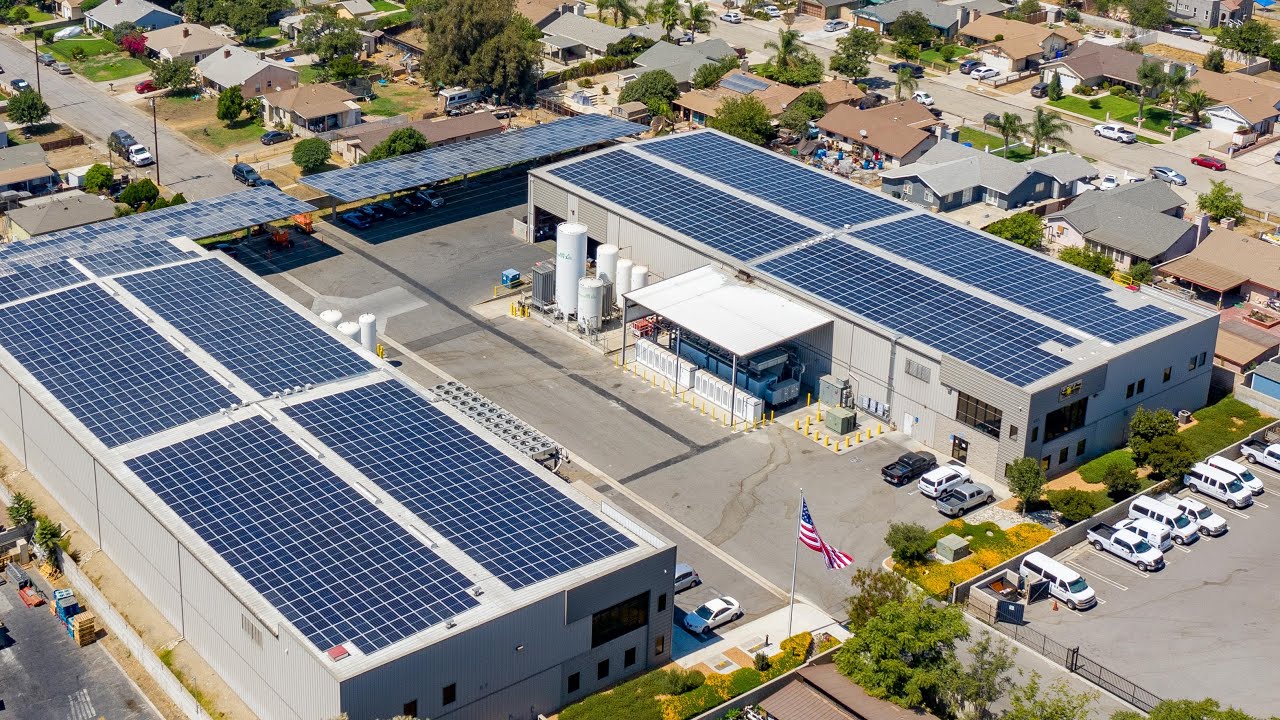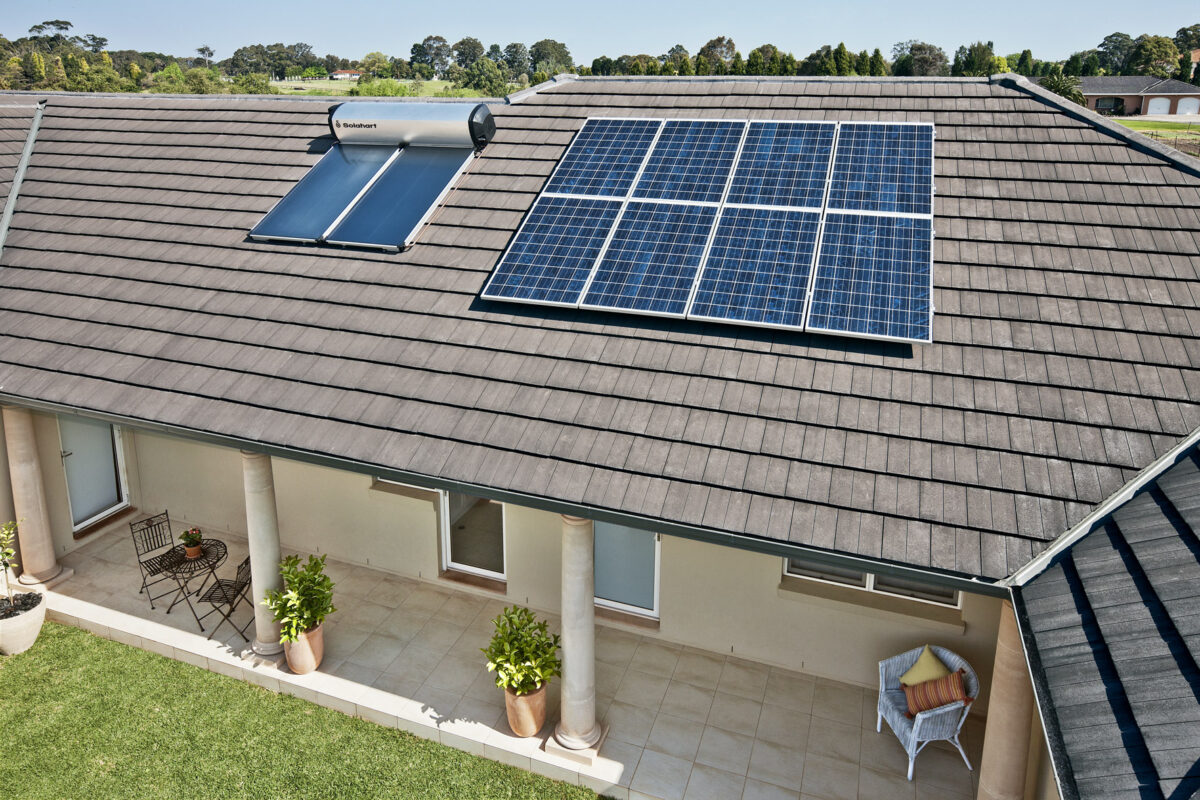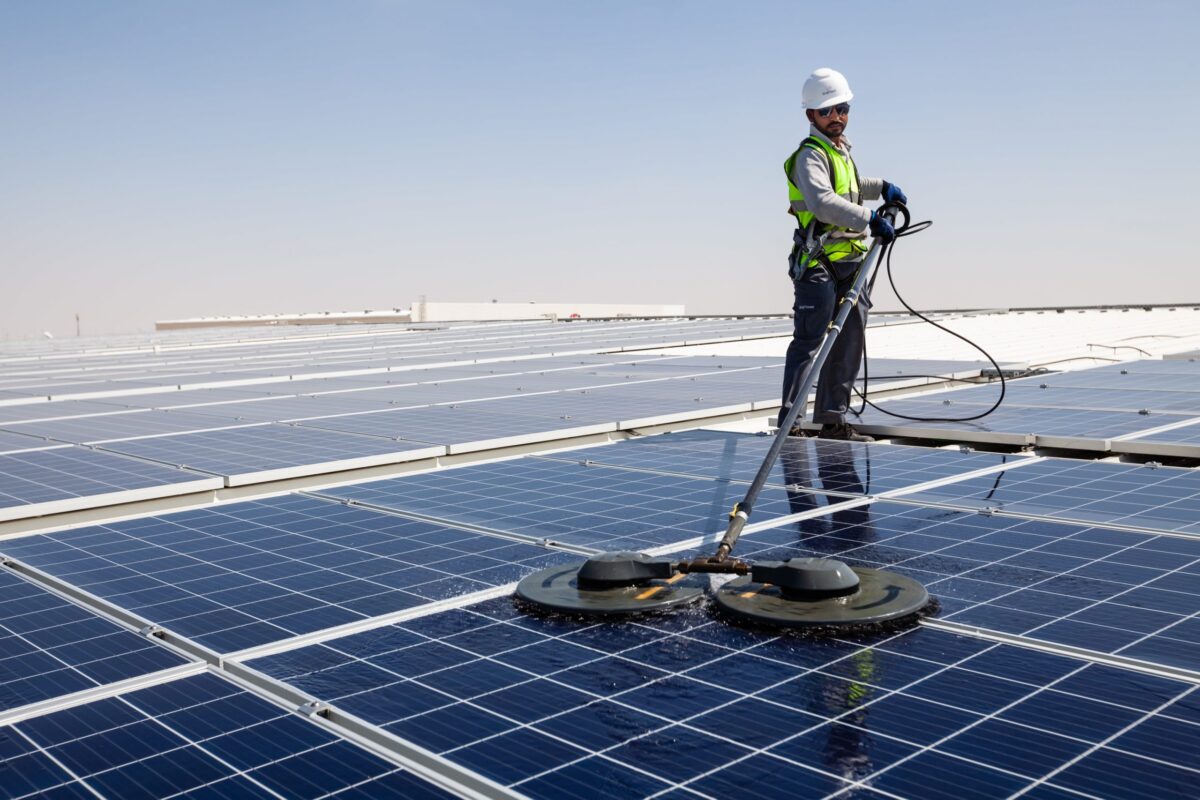Dubai’s sunshine, DEWA’s net metering, and mature installation standards have turned rooftop PV from a “nice-to-have” into a practical way to trim monthly expenses and hedge energy inflation—without sacrificing grid reliability. This guide explains how homeowners are cutting DEWA bills with solar panel, what results are realistic, and the exact steps that lead to smooth approvals, safe operation, and reliable savings under Shams Dubai. Yanvi Solar, a leading solar panel company in Dubai, brings end-to-end expertise—design, permitting, installation, inspection, and monitoring—to ensure each system performs as modeled and passes DEWA checks the first time.
Why Solar Panel Works So Well on Dubai Homes
Dubai combines excellent solar panel resource with a clear regulatory framework: fixed south orientation and about 24° tilt deliver roughly 2,100 kWh/m² annual irradiation in Dubai, a strong baseline for high yield if panels are kept clean and shade-free. Under DEWA’s Shams Dubai net metering, excess energy rolls over as credits to future bills with no expiry, and slab tariffs are applied after netting—so residual consumption is billed in lower slabs. Together, these factors underpin the residential business case: solid production potential, retail-rate crediting, and policy continuity since 2015.
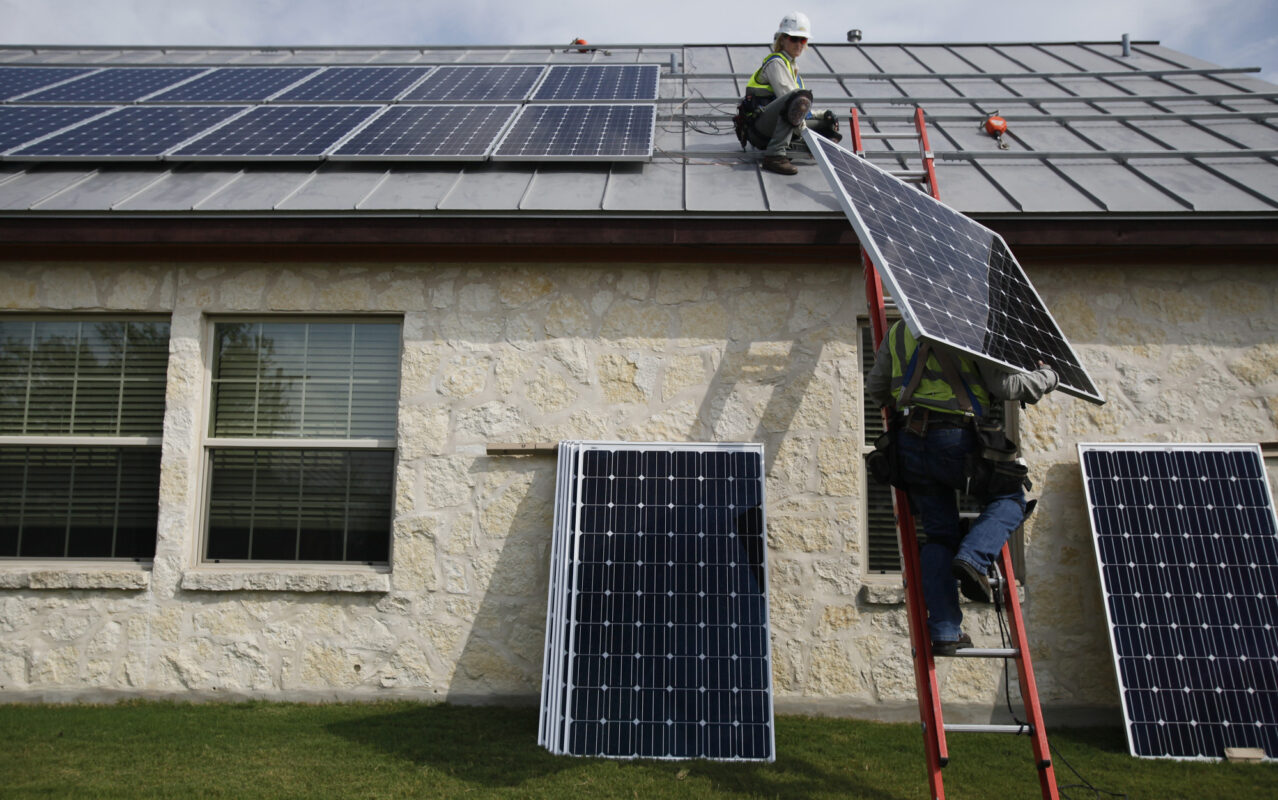
How Much Can Solar Panel Cut a DEWA Bill?
- Netting mechanism: Solar Panel first offsets on-site usage; monthly exports create credits that carry forward without expiry. DEWA then applies slab tariffs to the net balance, meaning more of the remaining kWhs are charged at lower slab rates, compounding savings.
- Resource and orientation: South-facing arrays near 24° tilt typically align with Dubai’s annual irradiation profile. Avoiding shading and scheduling frequent cleaning are critical in a dust-prone climate to preserve expected output.
- Policy scope: Shams Dubai is a rooftop program with connection rules, equipment eligibility, and plot-level capacity caps; ground-mounts are excluded under updated regulations, keeping systems building-tied.
What homeowners achieve in practice depends on roof area, daytime usage, and cleanliness. With correct orientation, shading control, and maintenance, the core ingredients are in place to materially reduce net consumption and maximize lower-slab billing—month after month.
Shams Dubai in Plain English
- What it is: DEWA’s net-metering scheme for grid-tied rooftop PV; homeowners generate energy with solar panel, consume it first, and export surplus for bill credits at the retail rate.
- How credits work: If production exceeds usage in a month, kWh credits roll over to the next bill. Credits are applied before slab tariffs, so any remaining consumption is charged at lower unit rates.
- Where to start: Engage a DEWA-enrolled consultant/contractor, apply for a Solar Panel NOC, submit the design package, install to DEWA standards, then pass inspection and meter installation before generation starts.
- No batteries required: For most homes, the grid acts like a “virtual battery” via netting and rollover, preserving reliability and reducing upfront costs.
What Homeowners Are Achieving—Realistic, Repeatable Outcomes
- Lower bills via self-consumption and rollover: Daytime output offsets HVAC, appliances, and pool pumps; surplus builds credits for evening and seasonal usage. After netting, slabs apply—so the remaining kWhs are billed in cheaper tiers.
- Performance aligned with resource: South orientation and ~24° tilt maximize annual yield; keeping modules clean avoids dust-related losses that Dubai’s climate can otherwise cause.
- Smooth approvals and connection: Following DEWA’s staged path—NOC, Design Approval, Inspection/Connection—and using enrolled contractors and eligible equipment shortens timelines and avoids rework.
Add these together and residents report steady, predictable savings that map closely to resource, roof space, and cleanliness discipline—no guesswork needed when engineered properly.
The DEWA Advantage—Mechanics That Maximize Savings
Indefinite Credits and Smart Slab Interaction
Monthly surplus kWhs are offset against future net consumption with indefinite rollover. Only after subtracting export credits does DEWA apply slab tariffs and fuel surcharge to the remainder—so residual usage is billed at lower slab rates. This sequencing helps projects outperform expectations, especially for villas with variable seasonal loads.
Policy Boundaries that Protect Program Integrity
Shams Dubai focuses on rooftops; ground-mounted projects are excluded and plot-level capacity caps are enforced. Designing within these boundaries keeps approvals predictable and operations compliant over the long term.
Expected Performance—Resource, Orientation, Cleanliness
- Resource baseline: About 2,100 kWh/m² annual irradiation in Dubai with south orientation and ~24° tilt.
- Orientation and tilt: Due south and ~24° tilt support all-year production and anchor yield modeling.
- Cleanliness and shading: Dust storms and deposits reduce output; frequent cleaning and eliminating shading preserve performance and prevent hot spots.
These fundamentals explain why two similar villas deliver different results: the cleaner, shade-free roof wins—even when both install comparable DC wattage.
Step-by-Step—From Assessment to Savings
- Site and roof assessment: Survey usable, shade-free area and confirm structural capacity; map a suitable inverter location with correct IP rating and ventilation.
- Engage a DEWA-enrolled contractor: Only enrolled firms can submit applications and coordinate inspection and connection under Shams Dubai.
- Apply for Solar Panel NOC: Initiate feasibility and regulatory checks via DEWA’s portal before detailed design.
- Submit technical design for approval: Provide SLDs, layouts, interface protection, eligible equipment datasheets, and schedule per DEWA standards.
- Install to DEWA regulations: Follow workmanship, protection, labeling, and environmental rating requirements suited to Dubai’s heat and dust.
- Inspection, meter, and connection: DEWA inspects, installs meter(s), and connects the system to enable net metering and monthly rollover credits.
- Operate and maintain: Monitor production and schedule cleaning after dust events to keep outputs on track with modeled performance.
Design Tips for Maximum Savings in Dubai’s Climate
Orientation, Tilt, and Layout
- Keep arrays south-facing at ~24° tilt, minimize inter-row shading, and group modules by identical plane on the same MPPT.
Dust Mitigation and Access
- Plan safe access for frequent cleaning, water availability, and drainage—cleanliness is a core performance lever in Dubai.
Inverter Siting and Ratings
- Select inverters with appropriate IP ratings and proven thermal behavior; install in shaded or ventilated locations to reduce derating during peak heat.
Common Questions—Quick, Factful Answers
Will DEWA pay cash for extra solar panel?
No. Surplus nets into bill credits that roll forward; there is no cash payout.
Can credits expire?
Credits accumulate and roll over to subsequent months; netting is applied before slab tariffs.
What orientation is best?
Due south with about 24° tilt balances annual yield at Dubai’s latitude.
Is cleaning necessary?
Yes. Frequent cleaning is recommended due to dust; shading should be avoided entirely.
How long is the process?
Timelines vary by scope and approvals; the stages are NOC, Design Approval, Inspection/Connection, then Generation—coordinated by DEWA-enrolled providers.
Can I install ground-mounted PV for net metering?
No. Shams Dubai is rooftop-centric with capacity limits; ground-mounts are excluded.
Case-Like Scenarios—What Drives Strong Outcomes
- Daytime self-consumption alignment: Homes with significant daytime cooling, appliances, or pool systems consume more solar panel energy in real time, reducing reliance on credits.
- Roofs with clean, south-facing planes: Continuous, shade-free planes oriented south with ~24° tilt and routine cleaning maintain modeled outputs.
- Approvals and eligible equipment: Submittals matching DEWA’s connection guidelines—eligible equipment, interface protection, harmonics data, and proper drawings—move quickly and avoid delays in “switch-on.”
How a Trusted Partner Makes the Difference
The “soft costs” in solar panel—submittals, coordination, inspections—determine how fast a project starts saving, as much as hardware choices and sunshine. Yanvi Solar Panel navigates DEWA’s NOC and design approvals, specifies climate-suitable equipment, and builds in cleaning access and monitoring so systems in Dubai’s heat and dust perform to plan. The result: reliable netting, credit rollover, and lower slab billing from the first month after commissioning.
Advanced Considerations—Sizing and Slab Strategy
- Size for winter baseload: Sizing PV around winter daytime baseload helps maximize high-slab displacement across the year because credits net first and slabs apply after.
- Monitor and adapt cleaning cadence: Use production data to trigger cleaning after dust events rather than fixed calendars.
- Protect yield in summer: Shade and ventilate inverters, elevate arrays for airflow, and keep strings/MPPTs grouped by plane to minimize mismatch at high temperatures.
The Dubai Resource—A Predictable Foundation
Dubai’s annual irradiation near 2,100 kWh/m² under south orientation and ~24° tilt, plus long sunshine hours, provides a steady production platform. Avoiding shading and staying ahead of dust are the two homeowner-controlled variables that translate resource into savings. For integrated homes (appliances, AC, EV charging) that shift discretionary loads to daylight, netting becomes even more effective month to month.
Your 7-Step Action Plan
- Gather 12 months of DEWA bills to understand usage patterns and slab exposure; note daytime loads that align with solar panel.
- Schedule a roof survey and shading analysis with a DEWA-enrolled contractor to quantify usable area and structural details for solar rooftop installation in Dubai.
- Apply for the Solar Panel NOC through the contractor to initiate DEWA’s process before detailed design.
- Develop a DEWA-compliant design package with eligible equipment, SLDs, layouts, interface protection, and harmonics data for approval.
- Install to DEWA regulations: workmanship, protection, labeling, environmental ratings, and inverter siting to handle heat and dust.
- Pass inspection, meter installation, and connection to enable net metering and monthly rollover credits.
- Monitor production and schedule cleaning in response to dust events to keep outputs on track with the resource baseline.
Yanvi Solar streamlines each step so savings begin sooner and continue reliably across seasons, reflecting Dubai’s policy and climate realities.
Final Take—Why Homeowners Are Winning with Solar Panel
- Policy fit: Net metering with indefinite rollover and slab-first netting structurally advantages self-generation in Dubai’s tariff system.
- Resource fit: Clear guidance on orientation/tilt and strong irradiation around 2,100 kWh/m²/year keep production predictable for well-sited rooftops.
- Practical path: A defined DEWA process, equipment eligibility, and an enrolled-contractor ecosystem reduce friction from permit to production.
Homeowners who design for Dubai’s heat and dust, follow DEWA’s approvals path, and maintain cleanliness are achieving dependable reductions in DEWA bills, season after season. With thoughtful system sizing and daylight load alignment, those savings grow—exactly what Shams Dubai intended. Yanvi Solar helps households execute this plan with rigor, turning Dubai’s sunshine into predictable credits and lower-slab billing every month through expert solar installation in Dubai.

